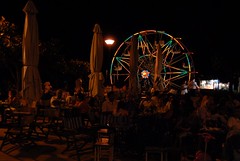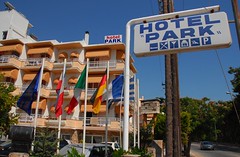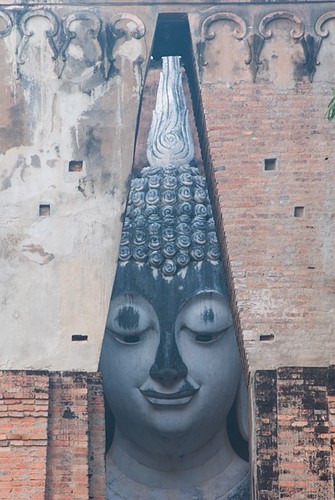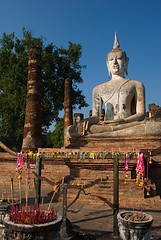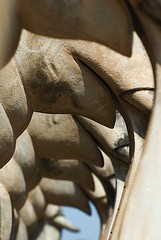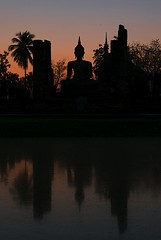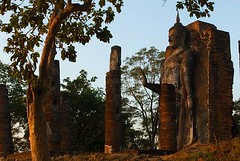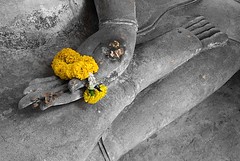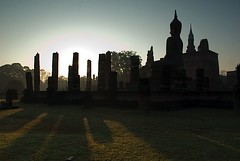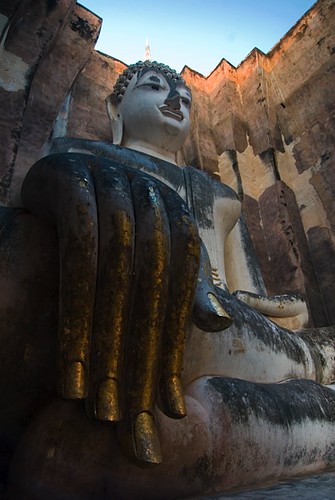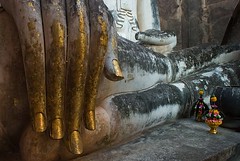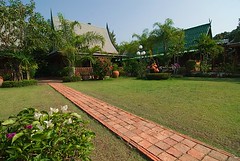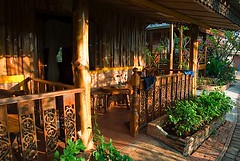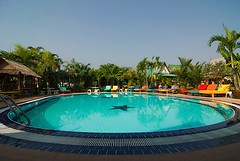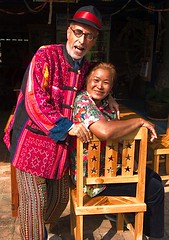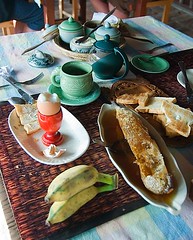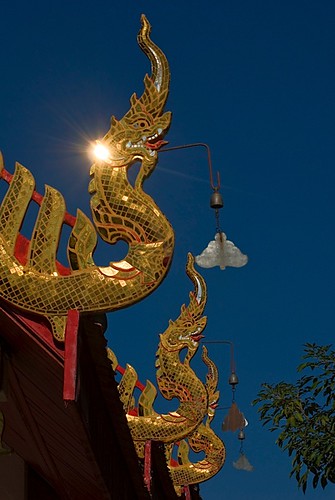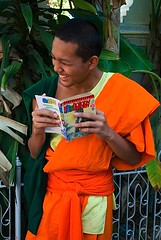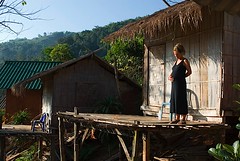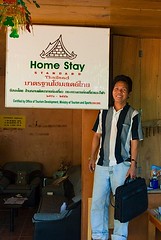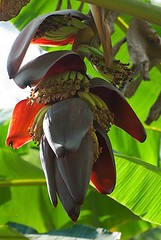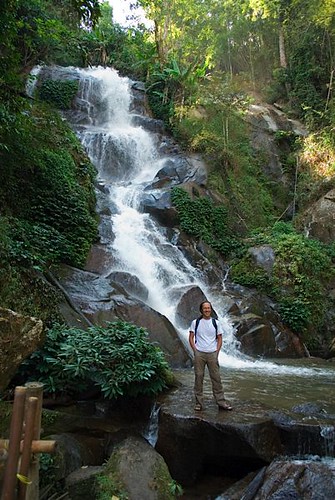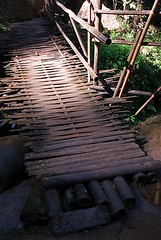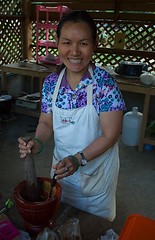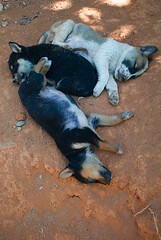The Art of Collective Memory

On a quiet street in downtown Alexandroupolis, situated near a cafe and a church, is an imposing historical building dates from the last years of the 19th century. Neo-classical marble columns stand guard above a flight of steps and to either side of a solid wooden door. We approached after a diversion behind the church, where a kindly lady pointed us in the right direction, to find the door closed and locked. This was a while after the stated opening time. Was the museum closed? We knocked. Soon, we heard footsteps approaching and a young face appeared in the door's window. 'Come in', he called throwing open the door and welcoming us into a warm wooden room lined with display cases that smelt and felt of well-worn age. A museum where you knock to have the door opened for you is a rare thing.
Inside time seemed to pause, to take on the sheen of past ages when Thrace was a very different region, Greece another country altogether and Turkey was the Ottoman Empire. All three and their turbulent history converge on this quiet house once owned by a successful businessman which unwinds away from the history of empires to expose the people's history of the communities who lived on this crossroads between Europe and Asia.

This is not a museum of high culture, of distant difficult-to-relate-to people. This is a museum of the everyday, of ordinary folks doing the ordinary things they needed to do before communiting, industrialisation and office jobs became the norm. It's a story of hard graft and simple pleasures. The museum is divided into themed rooms. Dress, religion and agricultural work make up a large part of the displays as you would imagine. An exhibition of mannequins sporting traditional clothes in front of a map of the region and black and white photographs from a time when these clothes were commonly worn is interesting, not solely for the clothes but for the similarities I've seen in the traditional clothes of South-East Asian hilltribes and the Maya of Central America. It seems that there are common uses of textiles in all three regions which tend towards a black material for the body of a jacket which is then adorned in multi-coloured embroidery. A universal language of the stitch?

Rooms of agricultural tools from before mechanisation always fascinate and impress me. They are hand-made tools for hand-made work, each as individual as the person who made them and worn smooth, buckled or bent through hard labour on the soil. They resonate with a time when calloused hands fed millions, when food was wrung from dry earth. They put into perspective the easy availability of over-ready meals and Kenyan green beans on supermarket shelves.
One thing that makes the museum distinctive is the presence of evocative, sociological descriptions for each room. Where many museums such as this rely on the functional or sentimental to explain their collections, here we are encouraged to think beyond the surface and deeper into the social meanings of the practices that the objects were used in, whether religious, ceremonial or utilitarian. The museum is to be applauded for taking this approach.

This is not a museum of high culture, of distant difficult-to-relate-to people. This is a museum of the everyday, of ordinary folks doing the ordinary things they needed to do before communiting, industrialisation and office jobs became the norm. It's a story of hard graft and simple pleasures. The museum is divided into themed rooms. Dress, religion and agricultural work make up a large part of the displays as you would imagine. An exhibition of mannequins sporting traditional clothes in front of a map of the region and black and white photographs from a time when these clothes were commonly worn is interesting, not solely for the clothes but for the similarities I've seen in the traditional clothes of South-East Asian hilltribes and the Maya of Central America. It seems that there are common uses of textiles in all three regions which tend towards a black material for the body of a jacket which is then adorned in multi-coloured embroidery. A universal language of the stitch?

Rooms of agricultural tools from before mechanisation always fascinate and impress me. They are hand-made tools for hand-made work, each as individual as the person who made them and worn smooth, buckled or bent through hard labour on the soil. They resonate with a time when calloused hands fed millions, when food was wrung from dry earth. They put into perspective the easy availability of over-ready meals and Kenyan green beans on supermarket shelves.
One thing that makes the museum distinctive is the presence of evocative, sociological descriptions for each room. Where many museums such as this rely on the functional or sentimental to explain their collections, here we are encouraged to think beyond the surface and deeper into the social meanings of the practices that the objects were used in, whether religious, ceremonial or utilitarian. The museum is to be applauded for taking this approach.

Three of the rooms are devoted to pleasure, to simple pleasures that ease stiff backs and reward days of hard work. These are alcohol, tobacco and sweets. I'm not sure if I've been to a museum with so much space given to this unholy trinity. The room of sweets has fascinating videos of traditional boiled sweets and Turkish Delight being made by hand in copper pans and on marble tables. The amount of work and art in making the sweets makes a packet of polos seem like a cheap fix. I took to the maker, a kindly grey-haired gentleman with the smile of a man who enjoys making things to make other people happy. I went into a shop selling hand-made sweets, ouzo and dried fruit after leaving the museum and looked upon the shelves of delights with child-again eyes of wonder. The video of the sweet man put magic back into the simplest of pleasures that can otherwise be so easily overlooked. I thank the museum for that and for revealing the rich texture of work-worn tools.

There was something very big missing from the museum, however. Not quite an elephant in the room perhaps, but massive enough to make me wonder whether this was historical gloss or deliberate avoidance. What of Thrace's position on the crossroads between Europe and Asia, and all the violence that has brought? Greek Thrace is only one part of Thrace, the other two regions having been situated in Bulgaria and Turkey since the 1920s. Community violence and enforced mass migrations followed when Ataturk created Turkey out of the ashes of the Ottoman Empire following World War 1. Thrace had a very mixed ethnic make-up of Greeks, Turks, Bulgarians, Greek Turks and Turkish Greeks at the time most of the tools in the museum were used. There is no reference to this at all. I like to think the museum has opted to avoid the burden of addressing this issue so that the lives of people shine out without being reduced to shadows in a wider political story. It is easier to for the people behind the displays to take centre stage when they're not subjugated to the chorus of national histories.


The Museum is at 63, 14th of May Street, Alexandroupolis. Current opening hours are Tues - Sat 10:00 - 14:00 & 18:00 - 21:00, Sun 10:00 - 13:30. Tel: +30 25510 36663. Email: info[at]emthrace.org





